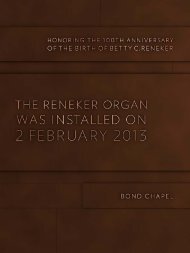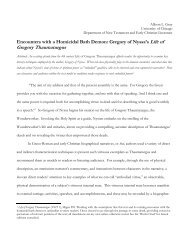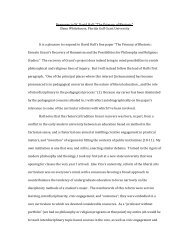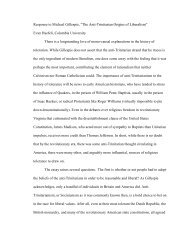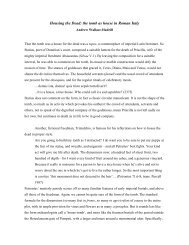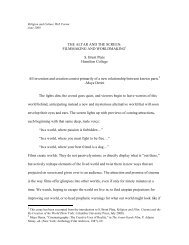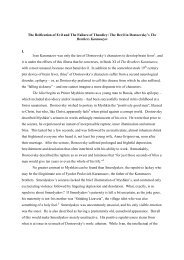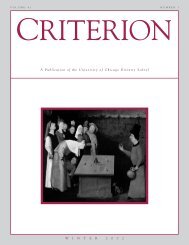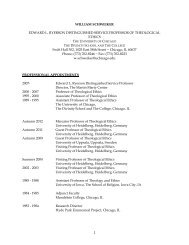Nota Bene - University of Chicago
Nota Bene - University of Chicago
Nota Bene - University of Chicago
You also want an ePaper? Increase the reach of your titles
YUMPU automatically turns print PDFs into web optimized ePapers that Google loves.
This placement <strong>of</strong> a necropolis just outside the city walls is as bustling a site in an ancient city<br />
as one can imagine, akin to the impressive funerary monument <strong>of</strong> C. Vestorius Priscus at the<br />
Vesuvian Gate, or the many funerary monuments lining the street from the Herculaneum gate<br />
at Pompeii. Like them, Abercius intended his βωμο� ς to be conspicuously displayed to passers-<br />
by (πα�ς ο� συνω� δο� ς), even while he lived. 75<br />
Although other burials are not in the view <strong>of</strong> the author <strong>of</strong> his vita, who gives the<br />
impression <strong>of</strong> a solitary, prominent monument (like the Kasserine tomb is now), they are,<br />
however, acutely in the mind <strong>of</strong> its author, who used his precious marble space to call out the<br />
punishments to be levied against anyone who laid another body in his tomb. Recognition <strong>of</strong> this<br />
strong possibility -- that the Abercius monument originally stood within a necropolis -- is an<br />
insight that once uttered makes us realize how little we really do have access to the most<br />
essential features <strong>of</strong> its original historical context. What graves stood near it (and when?)?<br />
Could it have been in or near a complex <strong>of</strong> family tombs (while the literary vita does not mention<br />
Abercius’ family, did the placement <strong>of</strong> his tomb signal it loud and clear?)? Was it conspicuously<br />
larger than any neighboring tombs? How tall did the βωμο� ς stand on its base? Could one see<br />
all the lettering clearly from ground level? None <strong>of</strong> these questions can be answered in the<br />
absolute, either, for necropoleis are continually shifting over time. How did the environs <strong>of</strong><br />
Abercius’ tomb monument change in the decades and years that became the two centuries or<br />
so between Abercius’ death and the composition <strong>of</strong> the vita Abercii? Were other burials placed<br />
near that <strong>of</strong> Abercius, either early or late (as part <strong>of</strong> the practice <strong>of</strong> burial ad sanctos which we<br />
saw much evidence <strong>of</strong> in floor mosaics from basilicas in North Africa)? Did the necropolis<br />
Page 22<br />
change from a predominantly non-Christian to Christian one (as seems likely)? 76 When was<br />
that change noticeable (and to whom)? And was there another inscription on the baths nearby<br />
Aberciosinschrift als Grabepigramm,” 35). See Fig. XX.<br />
75 The formula V F (vivos fecit) is very common in Latin inscriptions, and directly parallels the ζω� ν ε� ποι�ησεν<br />
in many other Greek inscriptions in Asia Minor (see Johnson, Early Christian Epitaphs from Anatolia, nos. 1.7, 8,13,<br />
22, 23, etc.).<br />
76 Given the demographics and the eventual enfranchisement <strong>of</strong> the Christian cult. The author <strong>of</strong> the vita<br />
Abercii presumes Hieropolis was predominantly “pagan” in his hero’s day.



